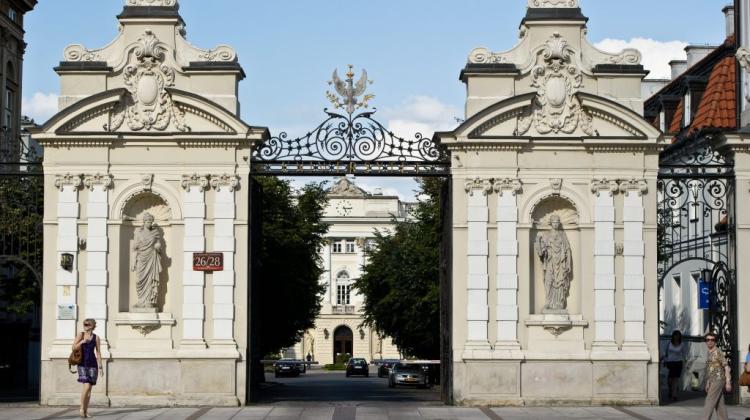Researchers from the University of Warsaw will help to preserve the Wymysorys language
 Photo: Fotolia
Photo: Fotolia
It is the first language for only about 30 people - residents of the town Wilamowice. Although it formed in the mid-thirteenth century, today it is threatened with extinction. Researchers from the University of Warsaw started a project to save Wymysorys from oblivion.
Researchers from the "Artes Liberales" program of the University of Warsaw started work on a three-year project to save Wymysorys from oblivion. "This is one of the most endangered ethnolects in Europe. It is the first spoken language of about 30 people living in Wilamowice in the south of Poland. Today, every third child in Wilamowice learns the native language during extracurricular classes in school" - informs the University of Warsaw.
Thanks to the involvement of scientists and the local community, the language that dates back to the thirteenth century has a chance to survive. Researchers from the UW received 1 million euros in funding from the Twinning programme of the European Commission. As a result, over the next three years they will organise workshops, four summer schools and research trips to London, Wilamowice, Leiden and Mexico, as well as the European Week of linguistic and cultural diversity, scheduled for November 2017.
The first university Wymysorys course started in February at the "Artes Liberales" Faculty of the University of Warsaw. Representatives of the "Artes Liberales" Faculty and the Association "Wilamowianie" prepared the performance "Hobbit. Hejna an cyryk", an adaptation of the novel by Tolkien played entirely in Wymysorys. Stars of the show are young people of Wilamowice who are learning the language of their ancestors.
Wymysorys appeared along with settlers from Western Europe, who founded Wilamowice in the mid-thirteenth century. It is related to German, Yiddish and Luxembourgish. It is not a dialect of Polish or German. It was the vernacular language of Wilamowice until 1945. The town was naturally trilingual. In the family and the community people used Wymysorys. Polish was the school, Church language and it was used in dealings with neighbouring towns. Before 1918, the language used in offices was German. After the Red Army entered, the use of the Wymysorys language was punishable by deportation into the Soviet Union and confiscation of estates. A ban on wearing Vilamovian clothes was also in force. Wymysorys began to recover after 1989. Since the mid-1990s it is propagated by the Association "Wilamowianie".
Wilamowice (in Wymysorys: Wymysou) is a town and municipality in the Bielsko county, located on the border of the historic lands of Cieszyn Silesia and Malopolska. It has approx. 3 thousand residents, or approx. 18 percent of the population of the municipality.
The University of Warsaw project co-financed by the European Commission "Involved Humanities in Europe: building potential/creating development opportunities for participatory language and culture heritage research" is a collaboration between the University of Warsaw, University of Leiden and the University of London. Its coordinator is Dr. Justyna Olko. In 2012, the researcher received the European Research Council grant for work on the endangered Nahuatl language, spoken by the descendants of the Aztecs.
PAP - Science and Scholarship in Poland
ekr/ agt/ zan/
tr. RL
Przed dodaniem komentarza prosimy o zapoznanie z Regulaminem forum serwisu Nauka w Polsce.


















